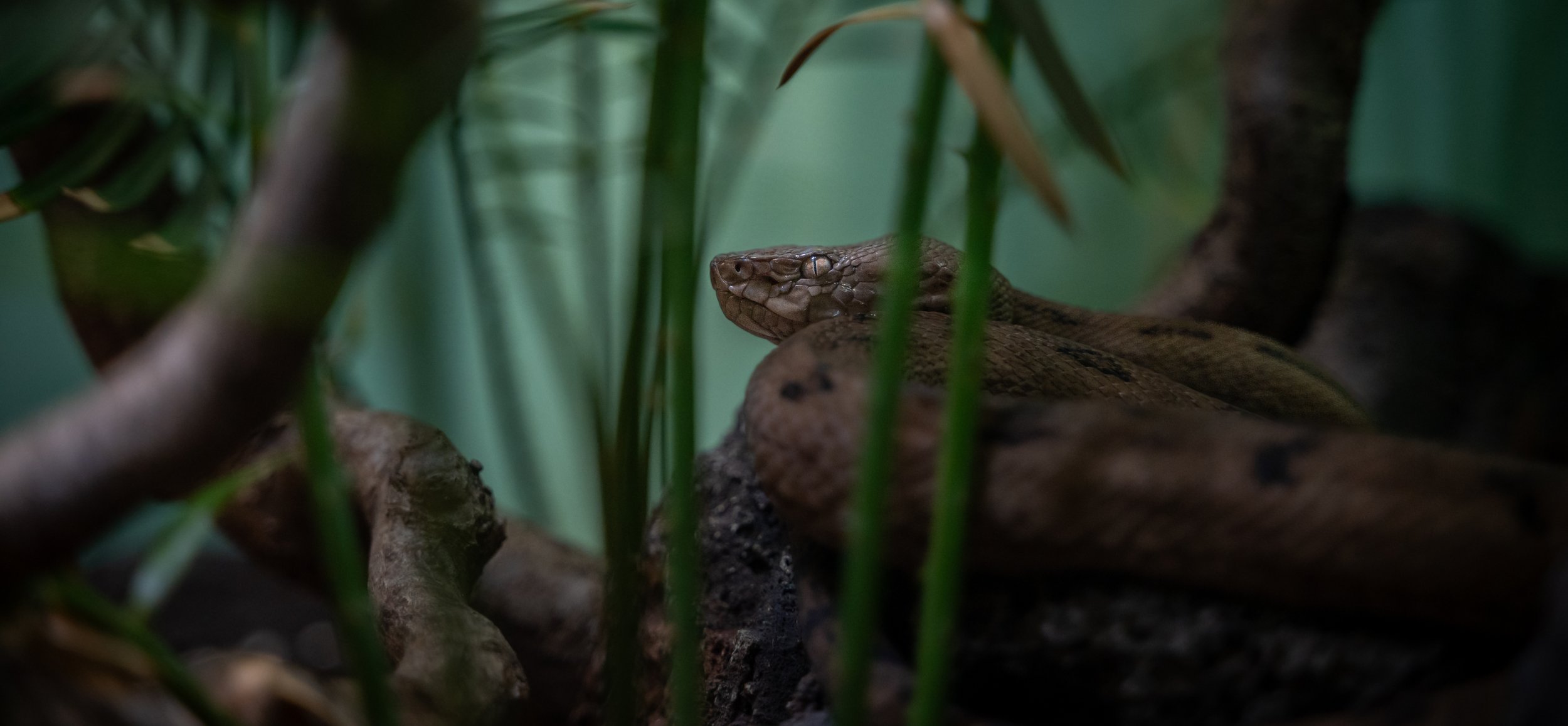
Reptiles and Amphibians.
“Reptiles and amphibians are sometimes thought of as primitive, dull, and dimwitted. In fact, of course, they can be lethally fast, spectacularly beautiful, surprisingly affectionate, and very sophisticated.”
- Sir David Attenborough, Biologist and Natural Historian
Who’s Helping Reptiles and Amphibians?
Even the smallest animals need our help. They are just as susceptible to habitat loss from deforestation and climate change, pollution and other human activity, and capture for the wildlife trade. Click on these conservation organizations to visit their websites and learn more about how to help.
Kiki Poison Dart Frog
Oophaga sylvatica
The Kiki poison dart frog, also known as Diablito or “little devil” is a species of poison frog found in Ecuador and Colombia. Agricultural development and the use of pesticides on crops have made a large impact on the habitat these frogs need to thrive in. Like most exotic reptiles and amphibians, they are consistently documented in the international illegal wildlife trade.
This threatened species uses its vibrant color and pattern to warn predators that it is poisonous, which is a trait it inherits as it matures by way of the diet it eats. They are carnivores with a diet comprised of ants, mites, and termites, which influence the alkaloid toxins in their skin.
Poison dart frogs can be quite aggressive and territorial. They will often pick fights with members of the same species over territories, especially males, who will engage in wrestling behavior to establish dominance and push other males out of their homes.
Ocellate Mountain Viper
Montivipera wagneri
Wagner’s viper, also called the ocellate mountain viper, is a critically endangered snake endemic to the mountains and valleys of eastern Turkey and northwestern Iran. They are found in a concentrated population in the Aras River Valley, and as such, their already limited numbers suffer greatly from over-exploitation by collectors for the international pet trade and from planned dam projects that would destroy over 80% of their habitat.
This snake was believed to be extinct for over 140 years before it was rediscovered in 1983. Upon hearing of this discovery, collectors for the international pet trade put this already rare snake back into danger.
Chinese Alligator
Alligator sinensis
Though the population of Chinese alligators is stable, it’s severely fragmented and there are less than 100 mature individuals in the wild, leading to its IUCN Critically Endangered status. Alongside their few numbers, they also face effects of pollution from agriculture and aquaculture expansion that has near totally completed habitat loss, as well as hunting and trapping.
Chinese alligators make their home in the freshwater marsh around the lower Yangtze River in eastern China. They typically grow to around five feet long, which is half the size of the American alligator, and they’re the only species in the alligator family that lives outside of the Americas. Other than size, they do not differ that much from American alligators in appearance, with one of the main differences being the bony plates above their eyes, which their American counterparts do not have.













